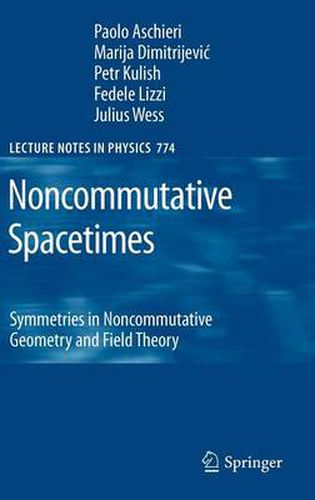Readings Newsletter
Become a Readings Member to make your shopping experience even easier.
Sign in or sign up for free!
You’re not far away from qualifying for FREE standard shipping within Australia
You’ve qualified for FREE standard shipping within Australia
The cart is loading…






This title is printed to order. This book may have been self-published. If so, we cannot guarantee the quality of the content. In the main most books will have gone through the editing process however some may not. We therefore suggest that you be aware of this before ordering this book. If in doubt check either the author or publisher’s details as we are unable to accept any returns unless they are faulty. Please contact us if you have any questions.
There are many approaches to noncommutative geometry and its use in physics, the ? operator algebra and C -algebra one, the deformation quantization one, the qu- tum group one, and the matrix algebra/fuzzy geometry one. This volume introduces and develops the subject by presenting in particular the ideas and methods recently pursued by Julius Wess and his group. These methods combine the deformation quantization approach based on the - tion of star product and the deformed (quantum) symmetries methods based on the theory of quantum groups. The merging of these two techniques has proven very fruitful in order to formulate ?eld theories on noncommutative spaces. The aim of the book is to give an introduction to these topics and to prepare the reader to enter the research ?eld himself/herself. This has developed from the constant interest of Prof. W. Beiglboeck, editor of LNP, in this project, and from the authors experience in conferences and schools on the subject, especially from their interaction with students and young researchers. In fact quite a few chapters in the book were written with a double purpose, on the one hand as contributions for school or conference proceedings and on the other handaschaptersforthepresentbook.Thesearenowharmonizedandcomplemented by a couple of contributions that have been written to provide a wider background, to widen the scope, and to underline the power of our methods.
$9.00 standard shipping within Australia
FREE standard shipping within Australia for orders over $100.00
Express & International shipping calculated at checkout
Stock availability can be subject to change without notice. We recommend calling the shop or contacting our online team to check availability of low stock items. Please see our Shopping Online page for more details.
This title is printed to order. This book may have been self-published. If so, we cannot guarantee the quality of the content. In the main most books will have gone through the editing process however some may not. We therefore suggest that you be aware of this before ordering this book. If in doubt check either the author or publisher’s details as we are unable to accept any returns unless they are faulty. Please contact us if you have any questions.
There are many approaches to noncommutative geometry and its use in physics, the ? operator algebra and C -algebra one, the deformation quantization one, the qu- tum group one, and the matrix algebra/fuzzy geometry one. This volume introduces and develops the subject by presenting in particular the ideas and methods recently pursued by Julius Wess and his group. These methods combine the deformation quantization approach based on the - tion of star product and the deformed (quantum) symmetries methods based on the theory of quantum groups. The merging of these two techniques has proven very fruitful in order to formulate ?eld theories on noncommutative spaces. The aim of the book is to give an introduction to these topics and to prepare the reader to enter the research ?eld himself/herself. This has developed from the constant interest of Prof. W. Beiglboeck, editor of LNP, in this project, and from the authors experience in conferences and schools on the subject, especially from their interaction with students and young researchers. In fact quite a few chapters in the book were written with a double purpose, on the one hand as contributions for school or conference proceedings and on the other handaschaptersforthepresentbook.Thesearenowharmonizedandcomplemented by a couple of contributions that have been written to provide a wider background, to widen the scope, and to underline the power of our methods.